Invasive species
How do invasive alien species affect biodiversity?
Invasive alien species are species that have been introduced, either naturally, accidentally or intentionally, into an environment that is not their own. After a certain amount of time, they adapt to their new environment and begin to colonise it. Such species are the second biggest cause of loss of biodiversity in the world, according to the United Nations Development Programme (UNDP). Below, we take a look at some of the most harmful.
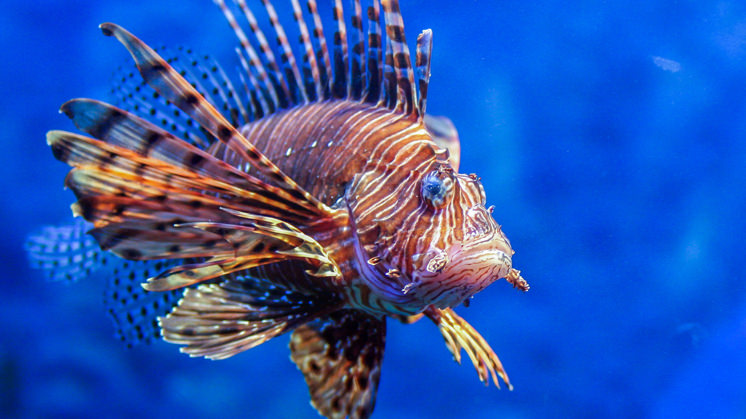
Globalisation has opened up new places, cultures and people to us. However, it has also given us access to animal and vegetable species that are extremely harmful to biodiversity, such as the Asian giant hornet (Vespa mandarinia) which appeared unexpectedly in North America in 2019. Such incursions are increasingly frequent, and are one of the main threats to the survival of one million of the world's species, according to the Intergovernmental Science-Policy Platform on Biodiversity and Ecosystem Services (IPBES).
What are invasive species
Invasive alien species are species that are introduced into new areas and, once there, are able to adapt, become established, reproduce and spread, colonising the environment, creating new populations and impacting on biodiversity, health and the economy. These can cause numerous problems, such as acting as predators — hindering the growth of native species —, altering habitats — causing physical and chemical changes to the soil —, competing for food and space; hybridising with native species, introducing new parasites and diseases.
A biological invasion can also have an impact on human health, since several species can transmit disease, cause allergies, and even be poisonous. The impact on the economy can be significant, leading to a reduction in or even the disappearance of fishing, livestock breeding and crop cultivation, and damage to the tourism industry.
Not all introduced species are invasive. Some of them are unable to adapt to their new environment or spread freely, as is the case with many farm animals and garden plants, meaning that they are not a threat to the area. Others acclimatise and spread without damaging the ecosystem, such as potatoes and corn, becoming established species.
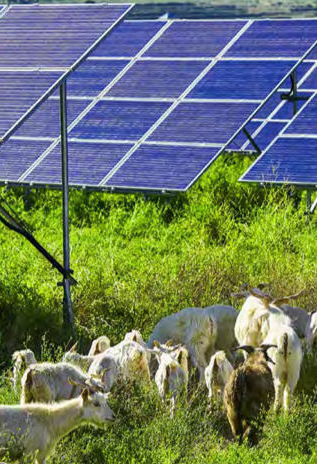
Biodiversity protection
How do we protect and preserve biodiversity on some of our more flagship projects?

SDG 14: Life below water
Our offshore wind business is respectful of the marine environment.

SDG 15: Life on land
Protecting, restoring and promoting the sustainable use of terrestrial ecosystems.
How invasive species are introduced
Exotic species travel around the world in the most unexpected ways, taking root in places that are thousands of kilometres away from their natural habitats. This is sometimes the result of human intervention — whether intentional or not — and sometimes caused by natural phenomena. Below, we look in more detail at some of the causes linked to human activity:
 The trade in wildlife
The trade in wildlife
Trade in exotic plants and animals is the main cause. Illegal trafficking of wildlife is a crime that turns over between 10 and 20 billion euros a year, according to the Worldwide Fund for Nature (WWF).
 Tourism
Tourism
Visiting other countries contributes to the spread of foreign species, whether intentionally or otherwise.
 Hunting and fishing for leisure
Hunting and fishing for leisure
In the past, these two activities were responsible for the introduction of animals such as the barbary sheep and the catfish across large parts of Europe.
 Transport and international trade
Transport and international trade
Invasive species often travel hidden away in aircraft holds, shipping containers and ships' hulls.
 Abandoned pets
Abandoned pets
Raccoons, monk parakeets and red-eared slider turtles are examples of exotic pets that have colonised ecosystems after escaping or being abandoned.
 Crops and the fur industry
Crops and the fur industry
The fashion industry and horticulture have also been gateways for mammals such as the American mink in Europe, and for plants such as the erect prickly pear in Africa and Oceania.
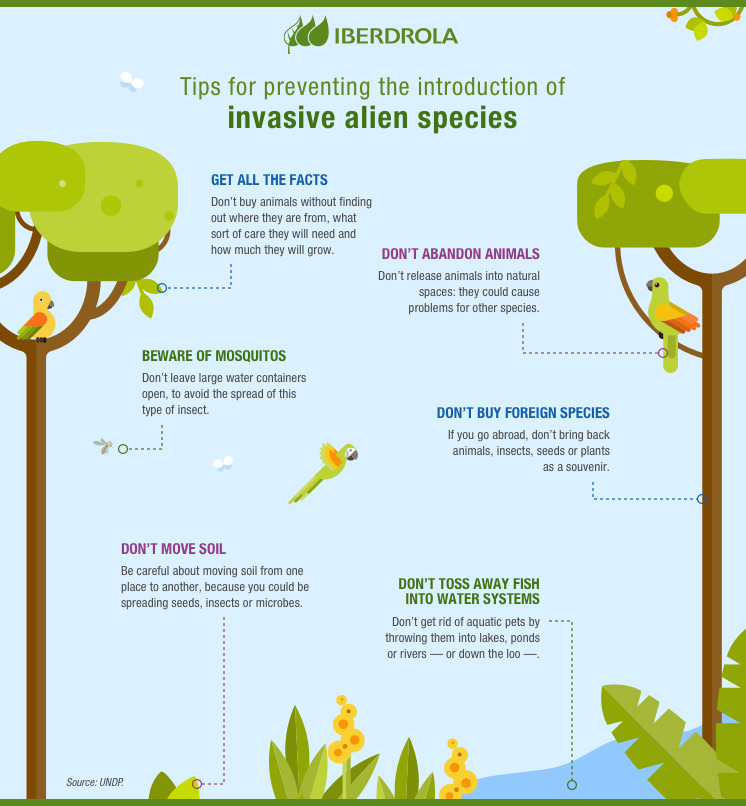
 SEE INFOGRAPHIC: Tips for preventing the introduction of invasive alien species [PDF]
SEE INFOGRAPHIC: Tips for preventing the introduction of invasive alien species [PDF]
How to control and reduce the impact of invasive species
The introduction of these species has a detrimental effect on the environment, but also on food safety, the control of diseases such as malaria and dengue fever, and on the economy. The IPBES estimates that in Southeast Asia alone, invasive species are responsible for the loss of $33.5 billion per year.
This harm could be largely avoided or mitigated by applying a diversified strategy that takes into account the following points:
- Legislation to prohibit imports of exotic species.
- Prevention through greater vigilance of entry points.
- Detection and rapid response to avoid species becoming established.
- Eradication of invasive species that have successfully spread.
- Pest control where eradication is not possible.
Invasive species examples
There is a long list of insects, animals and plants that have spread across the world, endangering biodiversity. Some of them are outlined below:
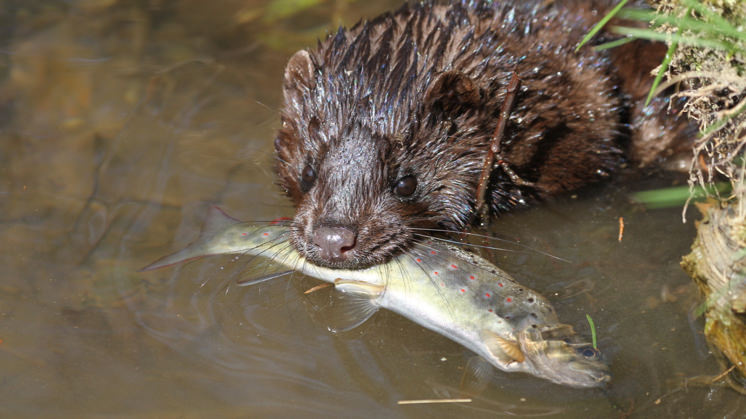
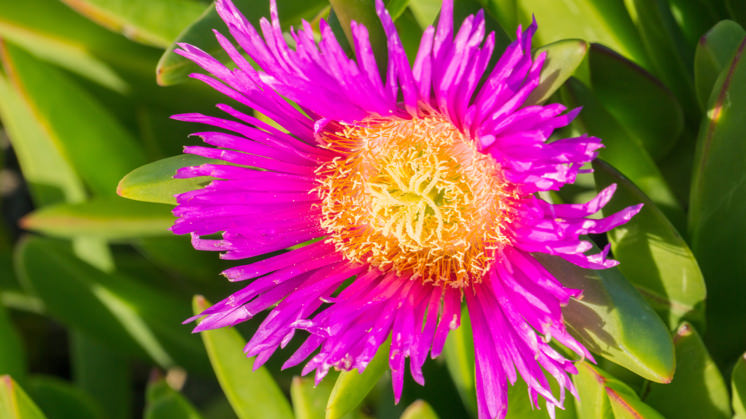
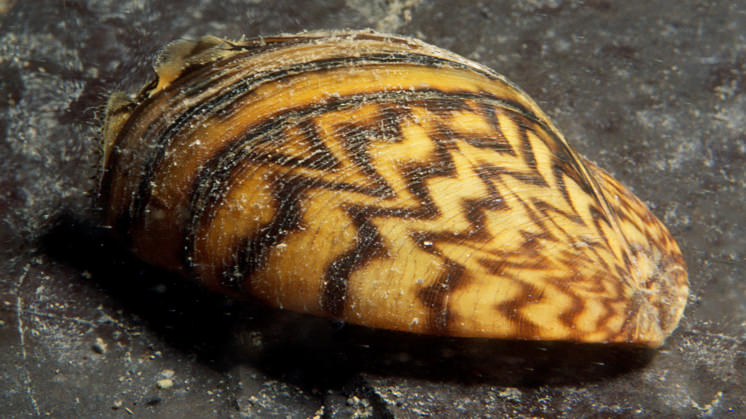

- American mink (Neovison vison). This small mammal affects numerous protected species of amphibians, fish, and mammals such as the European mink, which has been driven to the edge of extinction.
- Hottentot fig (Carpobrotus edulis). This plant is originally from Peru, and is often used as decorative plant because of itseye-catching flowers. However, it growth hinders the development of other species by taking over the ground occupied by the native vegetation.
- Zebra mussel (Dreissena polymorpha). This specie spreads very quickly, causing damage to habitats and fauna and to industrial, agricultural and urban water supply systems by blocking filters and pipes.
- Red swamp crayfish (Procambarus clarkii). The voracity of this crayfish makes it a threat to other fish, amphibians and aquatic invertebrates. It is also harmful to rice fields, and contains parasites, heavy metals and toxins.
- East Asian arrowroot (Pueraria montana lobata). this Japanese climbing plant, considered to be one of the most harmful species by the International Union for Conservation of Nature (IUCN), is found in a variety of very different places, such as the Caucasus, southern Africa, Switzerland, Italy and Canada.





